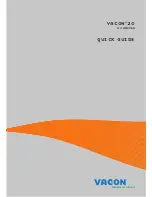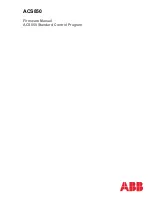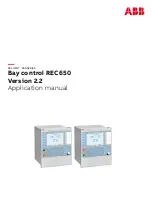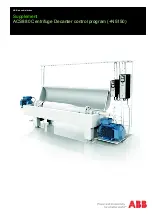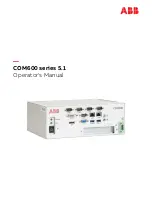
Page 21
Throttle Programming Functions
Characteristics of the throttle can be changed to meet your operating requirements. Most of you will never need
this. But if you do, with a little reading and some practice, you should find it fairly easy to do.
Zero Speed / Starting Voltage (1)
This setting determines the % of battery voltage applied to the motor when the throttle stick is at the full down po-
sition. Many locomotive motors require a certain amount a voltage to get started. Hence, the throttle stick will have
to be moved up a ways before the train starts moving. Increase the Starting Voltage until the train just starts mov-
ing, and then back it down slightly. Now the train will start moving at the bottom of the throttle stick travel.
Max Speed / Voltage (2)
This setting determines the % of battery voltage applied to the motor when the throttle stick is at the full up posi-
tion. Setting a Max Speed of less than 100% is useful for speed limiting your locomotive; e.g. when children are
running the train.
Speed Matching (1,2)
If you intend to double-head or power your train with multiple locomotives, you will need to match the speed char-
acteristics of each locomotive to the other. i.e. they all need to run at close to the same speed, regardless of throt-
tle position. This can be done adjusting the Zero Speed and Max Speed settings as required for each locomotive.
Active Throttle (3)
There are two ways to change settings. 1) With a “Dead Throttle”, using the throttle stick to indicate the desired %
of battery voltage (0-100% battery voltage = 0 to 100% Throttle Stick position). Or 2) With an “Active Throttle”,
controlling speed of the locomotive to visualize the setting.
Warning: When using active throttle programming,
there is no momentum applied to the throttle. Speed response will be quick, so use care in changing the
throttle stick position.
This is a toggled setting. Each time it is saved, it will change the state; from Active to
Dead or, Dead to Active.
Motor Polarity (4)
When running multiple unit locos, you may want to run one unit facing backwards from the other. This setting al-
lows you to reverse the polarity of the motor, so both units will move in the same direction. This is a toggled set-
ting. Each time it is saved, it will change the state; from Normal to Reversed, or Reversed to Normal.
Default Settings (5)
Don’t worry! In the event things get messed up, you can always restore them back to the default factory settings.
User Settings (6,7)
Once you get a setup you like, save it. This allows you to continue experimenting or changing things depending
on what you are doing at the time. Then get back your settings with one command. Starting Voltage, Max Speed,
Active Throttle, and Motor Polarity settings will be saved.
Throttle Programming Procedure
Power-up the Control/Receiver (Rx).
The PCB LED and the Front Light (if equipped) will start blinking a ‘heartbeat” (quick on time, long off time) to indi-
cate that power is on and it is waiting for the transmitter.
Power-up the Transmitter (Tx) while holding the direction stick UP.
Continue to hold it UP until the PCB LED
stays ON solid. This may take anywhere from 5 to 90 secs (the amount of time it takes for the Tx to link with the
Rx).
When the direction stick is released the PCB LED and Front Light will turn off, indicating it is ready for Throttle
Programming.
If “Active Throttle” is enabled, you will be able to control the speed of the locomotive in the forward direction only.
Caution: There will be no momentum and throttle response will be quick.





















